26 Augmented Sixth Chords
The four variants of augmented sixth chords all include the augmented 6th (A6) over the bass (le – fi). These chords contain a subdominant element (la – le – so) and a secondary dominant element (fa – fi – so) illustrating that the augmented sixth chord family is a product of linear chromaticism.

Augmented sixth chords resolve to the dominant, either to V(7) or to the [I ![]() ] – V(7) dominant group.
] – V(7) dominant group.
Syllables and analysis for the four types of augmented sixth chords
|
Italian sixth chord (It6) |
French sixth chord (Fr6) |
German sixth chord (Ger6) |
Enharmonic (Enh Ger6) |
| fi | fi | fi | fi |
| do | re | me | ri |
| do | do | do | do |
| le | le | le | le |
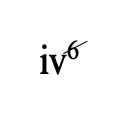 |
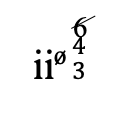 |
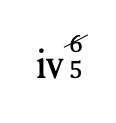 |
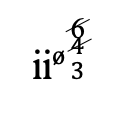 |
* Note that the interval of le – ri in the Enh Ger6 is a doubly augmented 4th, since the 4th is an augmented version of an already augmented interval.
The figured bass alternately may be sharps or naturals, or slashed Arabic numerals, to indicate raised notes.
Italian Sixth
The Italian sixth chord in major is a modally borrowed iv6 chord with fi, often approached from IV6. In minor it is a iv6 chord with fi.
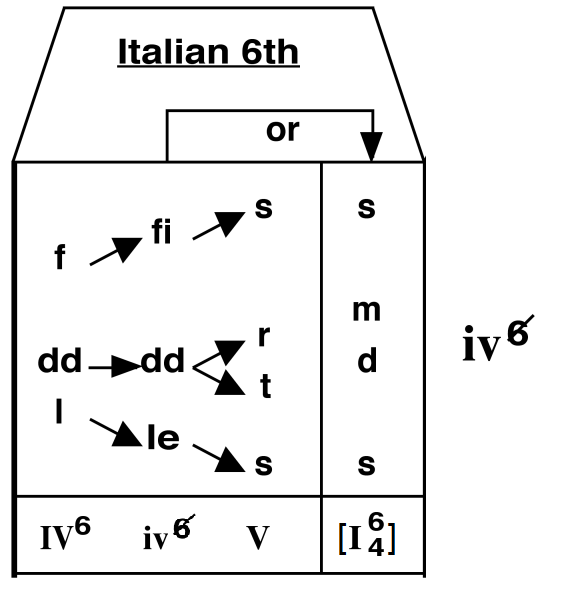
French Sixth
The French sixth chord in major is a modally borrowed iiø ![]() chord with fi. In minor the French sixth chord is a iiø
chord with fi. In minor the French sixth chord is a iiø ![]() chord with fi.
chord with fi.
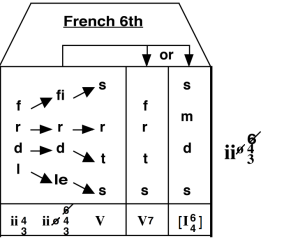
German Sixth
The German sixth chord in major is a modally borrowed iv![]() with fi. Note that the parallel P5ths (me – re and le – so) between Ger6 – V are acceptable because they are covered up by the strong outward resolution of the A6 interval. In minor the chord is a iv
with fi. Note that the parallel P5ths (me – re and le – so) between Ger6 – V are acceptable because they are covered up by the strong outward resolution of the A6 interval. In minor the chord is a iv![]() with fi.
with fi.
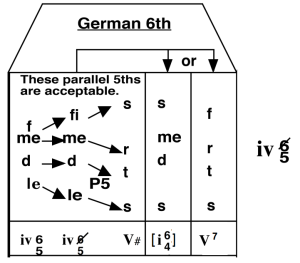
Enharmonic German Sixth
The enharmonic German sixth chord is used exclusively in major keys to approach the [I ![]() ] chord. The enharmonic German sixth chord sounds the same as a German sixth chord, but me is interpreted enharmonically as ri for ease of reading by avoiding me moving chromatically to mi. With the enharmonic change the chord looks like a borrowed iiø
] chord. The enharmonic German sixth chord sounds the same as a German sixth chord, but me is interpreted enharmonically as ri for ease of reading by avoiding me moving chromatically to mi. With the enharmonic change the chord looks like a borrowed iiø ![]() chord with a raised 6th (fi) and the raised 4th (ri) over le in the bass. Note the doubly augmented 4th (le – ri).
chord with a raised 6th (fi) and the raised 4th (ri) over le in the bass. Note the doubly augmented 4th (le – ri).
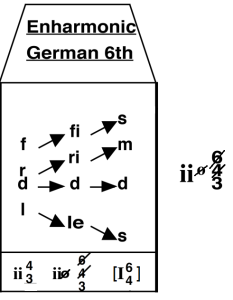
Commercial Chord Symbols of the Augmented Sixth Chord Family
There are no commonly accepted chord symbols for the It6, Ger6, and Enh Ger6 chords.
A. The Italian sixth chord is enharmonically equivalent to an incomplete dominant seventh chord built on le (![]() VIdom7). The symbol in C major is [A
VIdom7). The symbol in C major is [A![]() 7 inc]. The bracket indicates that it is an approximation since the 7th of A
7 inc]. The bracket indicates that it is an approximation since the 7th of A![]() 7 (G
7 (G![]() ) is spelled enharmonically as F
) is spelled enharmonically as F![]() (fi).
(fi).
B. The German sixth and enharmonic German sixth chords are enharmonically equivalent to a complete dominant seventh chord built on le. The symbol in C major is [A![]() 7]. The bracket indicates that it is an approximation since the 7th of A
7]. The bracket indicates that it is an approximation since the 7th of A![]() 7 (G
7 (G![]() ) is spelled enharmonically as F
) is spelled enharmonically as F![]() (fi).
(fi).
Both the Italian and German sixth chords sound like dominant seventh chords, but since fi resolves upward and not down, no dominant seventh resolution occurs.
C. The French sixth chord can be perceived as a ![]() /V in second inversion. (See the chapter on Altered Dominants.) The symbol in C major is D7(
/V in second inversion. (See the chapter on Altered Dominants.) The symbol in C major is D7(![]() 5)/A
5)/A![]() . The chord also is used in root position (
. The chord also is used in root position (![]() /V). The symbol in C major is D7(
/V). The symbol in C major is D7(![]() 5).
5).
Voice Leading
The Italian, French, and German sixth chords resolve the same way in both major and minor keys. The chords are used more frequently in minor.
1. Italian Sixth
In the diagram below, the first example is in minor and the next two examples are in major, though all examples work in both major (with mi) and minor (with me).
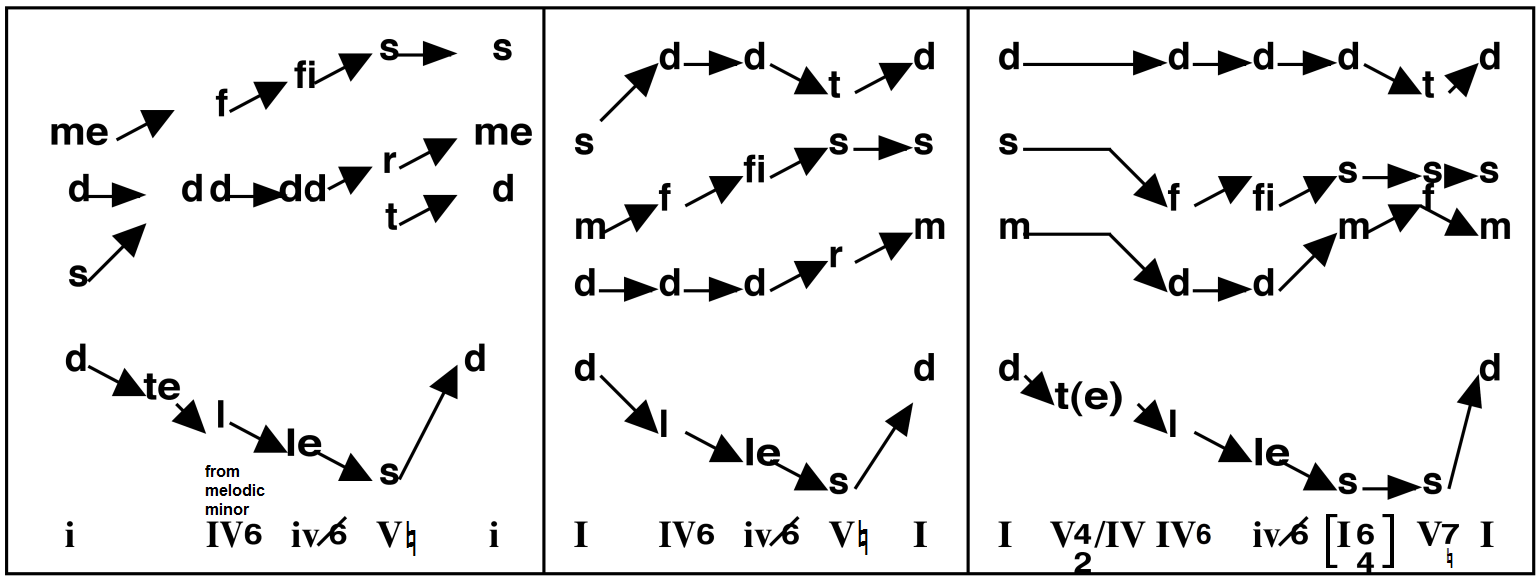
2. French Sixth
The diagrams below are written in major (with mi), but also work in and minor (with me).
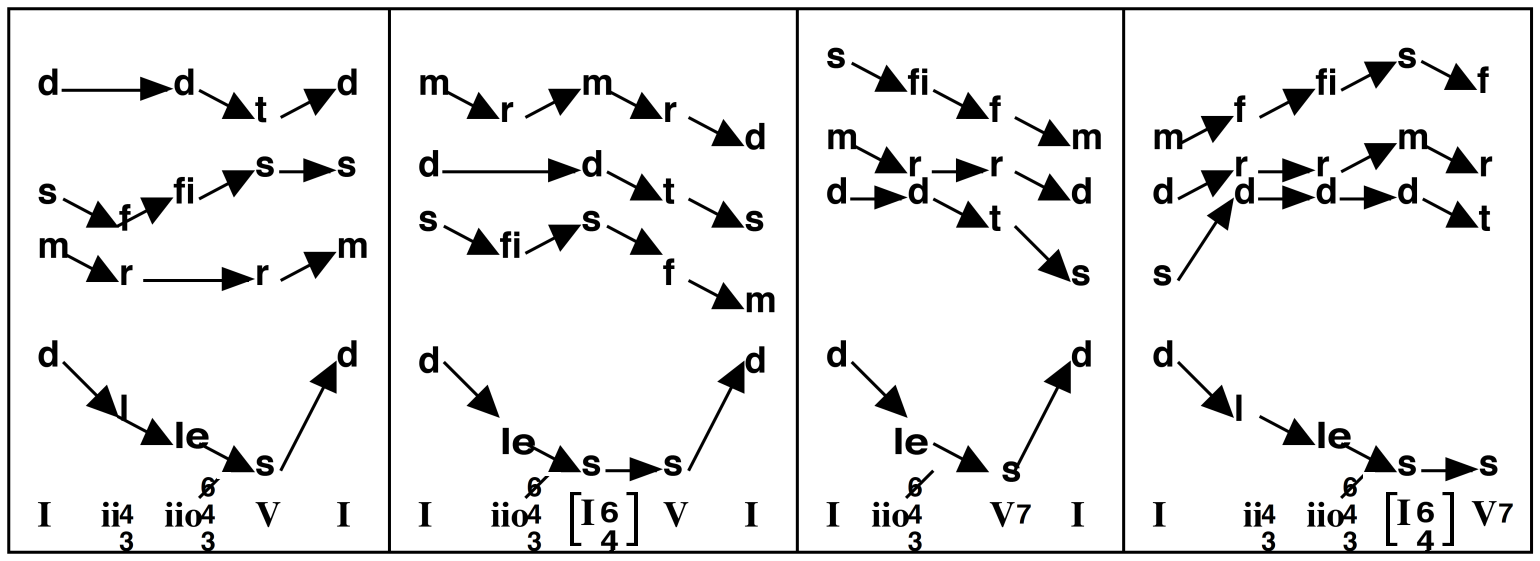
Note that in minor the ii![]() chord is from descending melodic minor.
chord is from descending melodic minor.
3. German Sixth
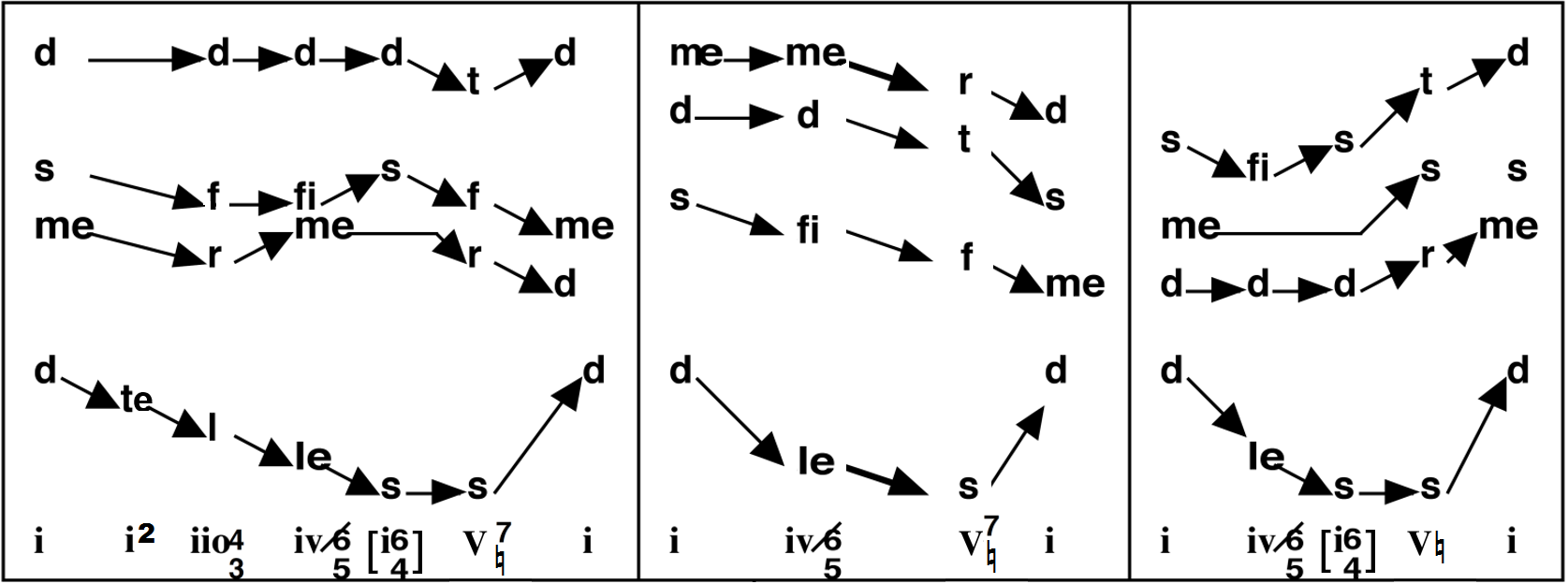
Note that in major, the above examples using the [I ![]() ] chord result in me moving to mi. Avoid the chromatic alteration of the same pitch by interpreting me enharmonically as ri. See #4 below.
] chord result in me moving to mi. Avoid the chromatic alteration of the same pitch by interpreting me enharmonically as ri. See #4 below.
4. Enharmonic German Sixth to [I ![]() ]
]
In major keys only (ri – mi instead of me – mi). With A6 and doubly A4.
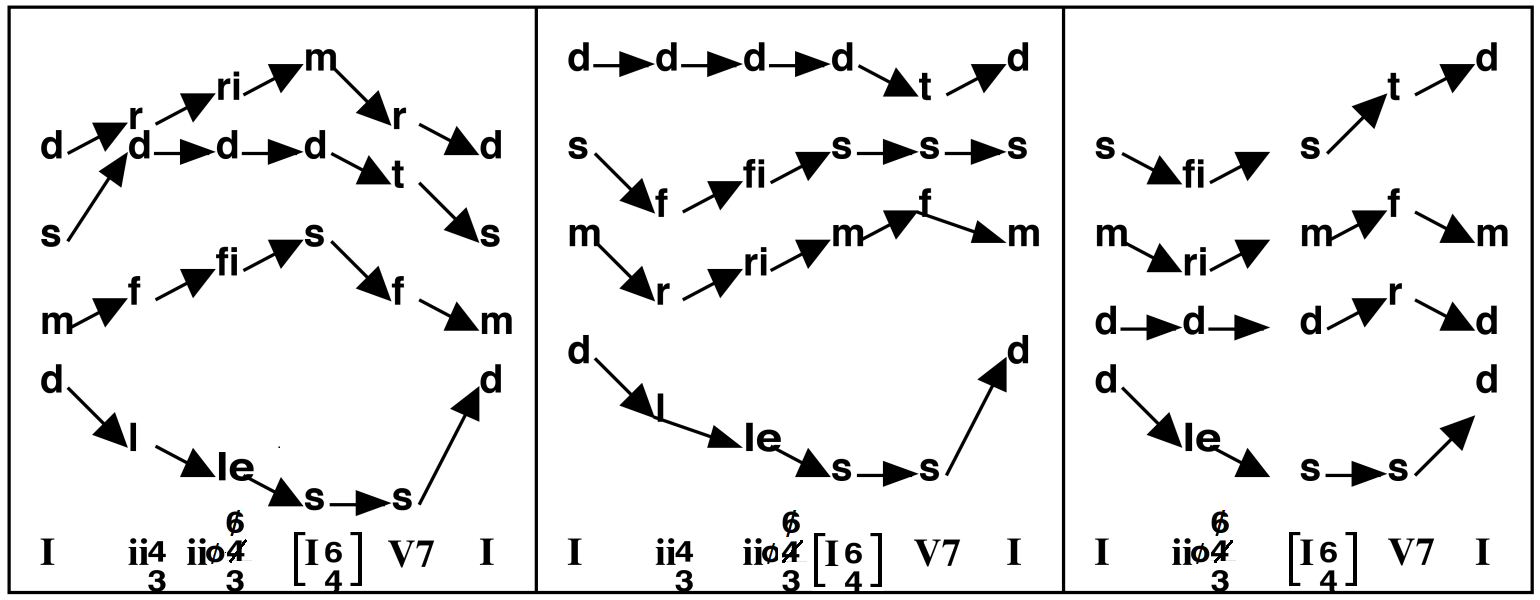
5 & 6. Consecutive Use of Augmented Sixth Chords
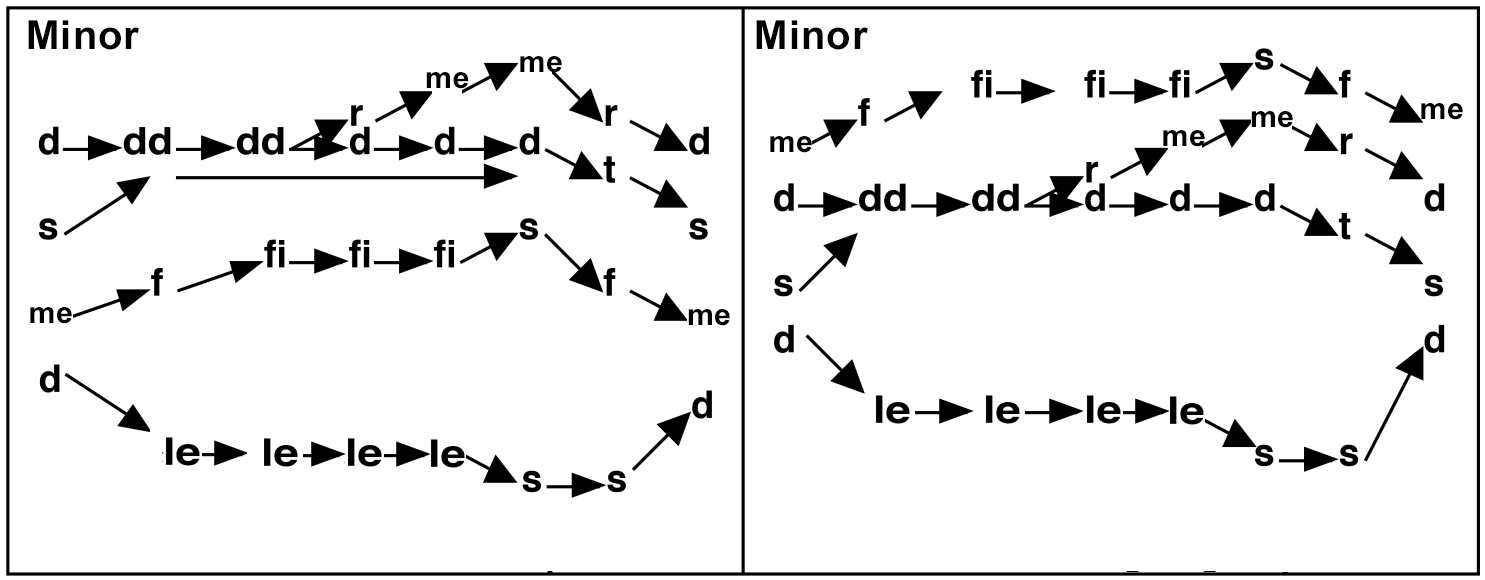
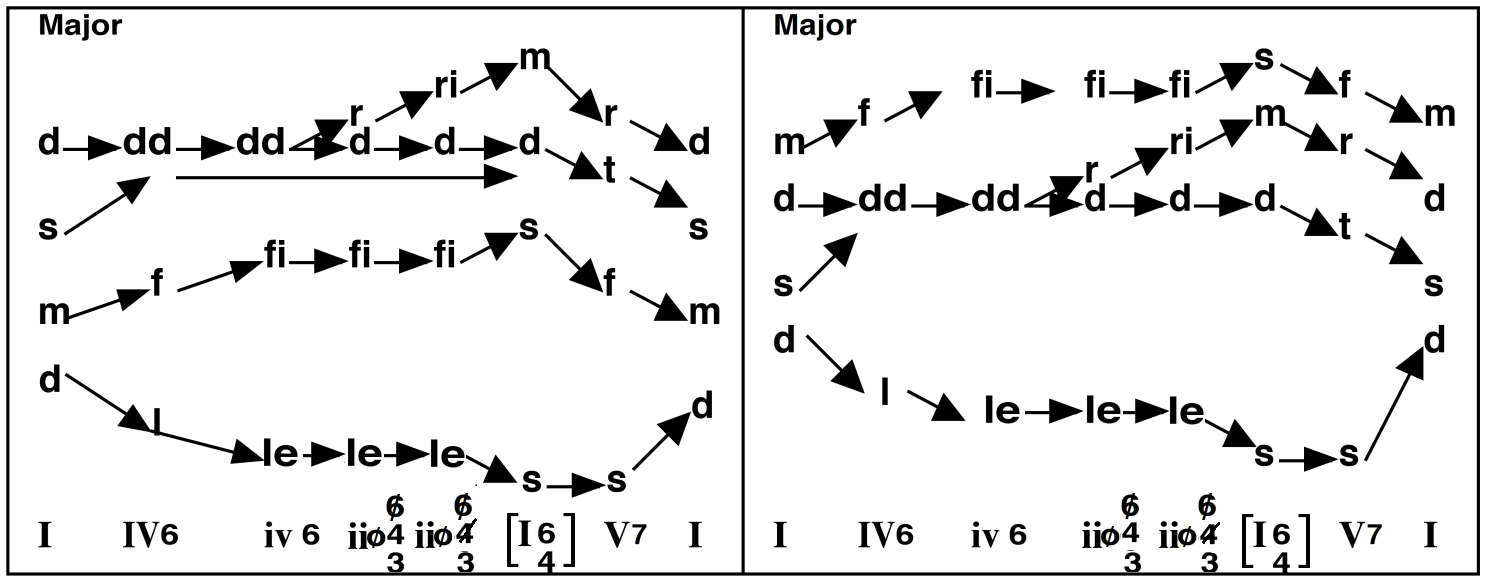
7. The German Sixth Chord in Root Position
The German sixth chord in root position is available both in major and harmonic minor. It is a product of linear chromaticism in the outer voices, with the soprano moving do’ – te – la – le – so and the bass moving from do – mi – fa – fi – so.
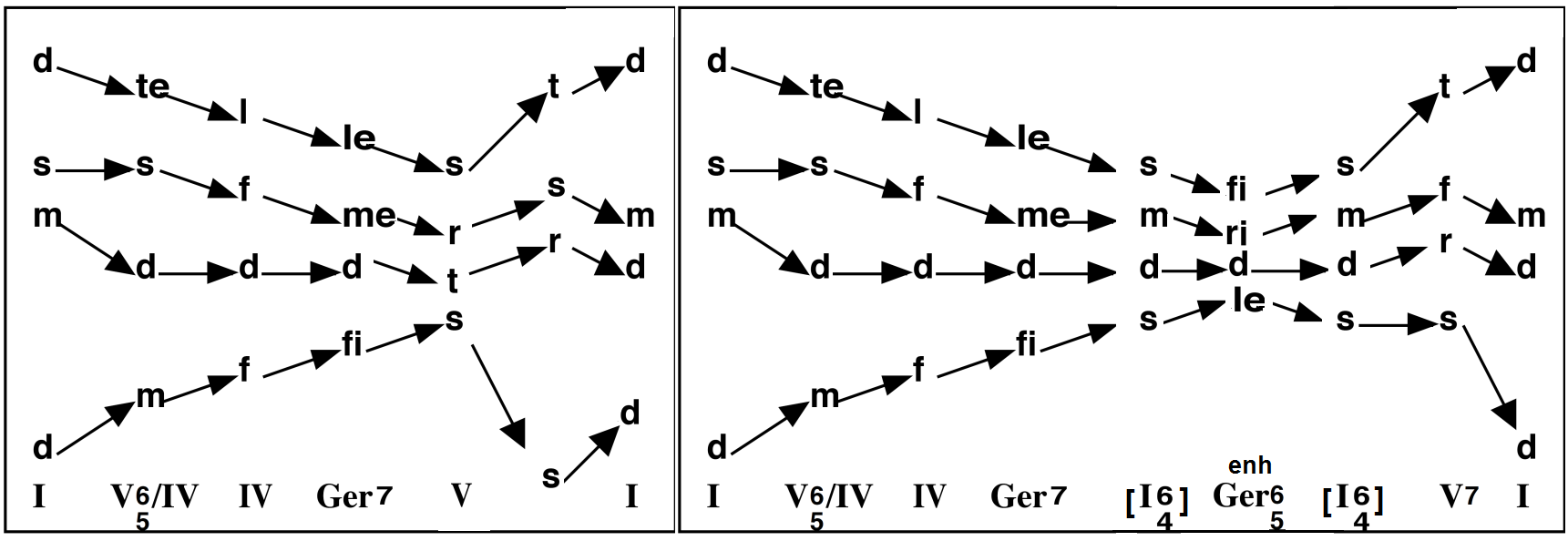
*Commercial chord symbol approximation of a root position German sixth chord: A![]() 7/F
7/F![]() = [A
= [A![]() 7/G
7/G![]() ]
]
8. German Sixth Chords as Passing Chords Connecting V![]() and V7
and V7
Also works in reverse.

The German chords in the above example result from a voice exchange in the outer voices (s – si – l – te – t in the soprano and t – te – la – le – s in the bass). Although the chords are borrowed from the key of the supertonic, the chords act as nonfunctional passing chords between inversions of the dominant (V![]() and V7), thereby prolonging the dominant. Other inversions of the dominant seventh chord can be connected in a similar manner through the use of chromatic passing chords. This technique is referred to as an omnibus.
and V7), thereby prolonging the dominant. Other inversions of the dominant seventh chord can be connected in a similar manner through the use of chromatic passing chords. This technique is referred to as an omnibus.
Summary of Augmented Sixth Chords
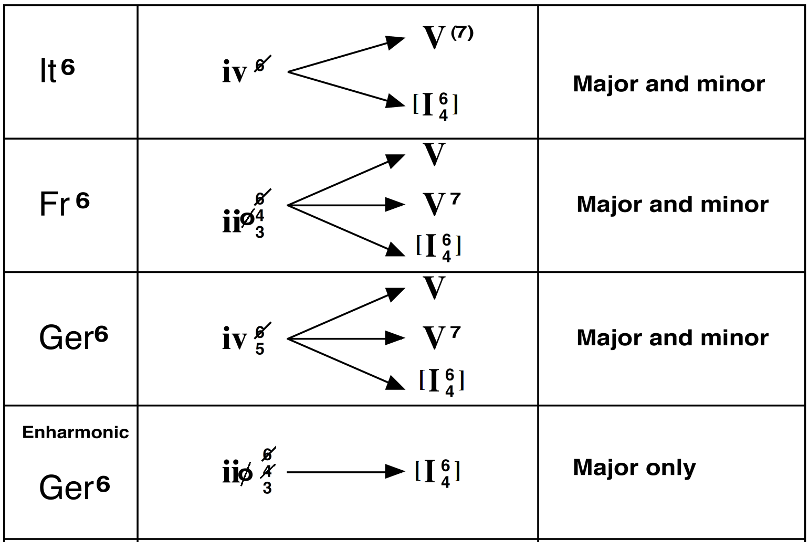

Practice 1
Transpose the above examples into several different keys. Play at the keyboard.
Practice 2